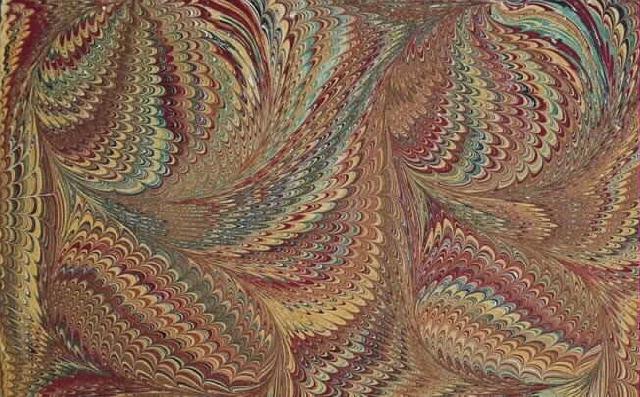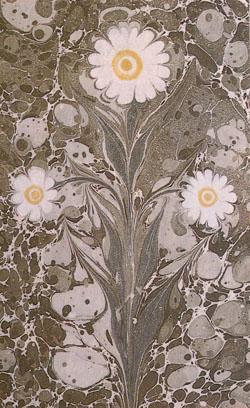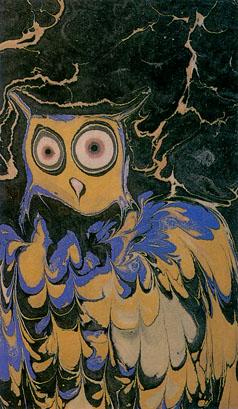Monday, October 22, 2007
Anassuwandi Hj. Ahmad

Thursday, October 18, 2007
Dato Ibrahim Hussein
To me, painting is like praying. When I paint, I am dealing with my heart, my work and God. There is deep joy and gratitude. Each piece frames a moment in my life. ~Dato Ibrahim Hussein
Wednesday, October 17, 2007
Tuesday, October 16, 2007
Lomography


Lomo, or lomography (shooting with cheap snapshot cameras) is known for its dreamlike, aesthetis, with optical distortion, supersaturated colors, exaggerated vignetting, streaks from light leaks, and unpredictable outcomes.

Upin & Ipin - A Review
 This has got to be the best local 3d animation series I’ve ever seen on Malaysian television. They have definitely set the bar high for the local production companies. Produced by Les' Copaque Production, it is a fully 3d animated series starring twins Upin & Ipin (voiced by Nur Fathiah Bt. Diaz) who begin the story by sharing their first Ramadhan experience.
This has got to be the best local 3d animation series I’ve ever seen on Malaysian television. They have definitely set the bar high for the local production companies. Produced by Les' Copaque Production, it is a fully 3d animated series starring twins Upin & Ipin (voiced by Nur Fathiah Bt. Diaz) who begin the story by sharing their first Ramadhan experience.The character design is quite simple but very original. It is obvious the animators spend a lot of time refining the characters as they are believable and full of characteristics that Malaysians can identify with. Details like the slight nuances the characters make right down to the kind of fabric. The voice actors too give as much life to the characters as with the animators. The characters in Upin & Ipin give a lasting impression throughout the episodes. The neighbourhood kids Rajoo (Kannan A/L Rajan) and Mei Mei(Yap Ee Jean). I'm sure most of you have encountered kids like Mei Mei and Rajoo while growing up in
Although the characters are simple in design, the environment is so rich in detail right down to the door hinges, plants, textile’s design, kid’s drawings on the wall and even the tudung saji (the thing to cover food).Anyone in Malaysia will tell you how reminiscent the environment is of a typical Malay kampung (village).
What I am most impressed with is how educational and rich in culture the storyline is. It teaches you Malaysian culture and also the teachings of Islam. It has a very Malaysian sense of humour that may appeal to international viewers as well.
The one thing that they could improve on is the sound design. Not that it is bad or anything but they could add a bit more detail or get rid of the popping and hissing sounds produced by speaking too close to the microphone. It is not that obvious but it is there. I'm just looking for something to complain about because it's just too awesome!
The series is addictive and fun for the whole family to watch. This series will pave the way for many generations of great Malaysian 3d animators to come. Finally a Malaysian 3d company I can be proud of.
Upin & Ipin Trailer
Upin & Ipin : Episod 1 - Esok Puasa
Upin & Ipin : Episod 2 - Dugaan
Upin & Ipin : Episod 3 - Nikmat
Upin & Ipin : Episod 4 - Terawih
Upin & Ipin : Episod 5 - Esok Raya
Upin & Ipin ; Episod 6 - Hari Raya
Les' Copaque Production website
The Official Production Blog
Wednesday, October 3, 2007
Turkish Islamic Art of Marbling




The word marbling is in Turkish EBRU (cloud, cloudy) or abru (Water face) (En Français. It is derived from the word ebre which belongs to one of the older Central Asian languages and it means the "moiré, veined fabric, paper etc..." used for covering some manuscripts and other holy books. Its origin might ultimately hark back to China, where a document from the T'ang dynasty (618-907) mentions a process of coloring paper on water with five hues. Through the Silk Road this art came first to Iran and picked up the name Ebru. Subsequently this art moved towards Anatolia. Specimens of marbled paper in the Turkish museum and private collections date back as far as the 15th century but unfortunately there is no evidence to show at what date the art of marbling paper first appeared in Anatolia. Around the end of 16th century tradesmen, diplomats and travelers coming to Anatolia brought this art to Europe and after the 1550s, booklovers in Europe prized Ebru which came to be known as "Turkish Paper Turkish marbled paper making". After then it was broadly used in Italy, Germany, France and England.
There is agreement amongst scholars that the so-called Turkish Papers has a colourful influence on the book arts of Europe. In the early examples from the 16th century in the Ottoman-Turkish era, Ebru appears in the battal (large) form, namely without any manipulation. Ebru technique consists of sprinkling colors containing a few drops of ox-gall on to the surface of the bath of water mixed with with kitre (gum tragacanth) in a trough. By carefully laying the paper over the bath, the floating picture on top of it is readily transferred to the paper thus, each Ebru is a unique print. To obtain beautiful Ebru results, one needs to have a light hand, refined taste and an open mind to the unexpected patterns forming on the water. Patience and a good knowledge of traditional culture are characteristic of Ebru masters. Since the art of marbling had a significant importance in Islamic art, it is essential to recall the basic principles of Islamic art in order to have a better and closer look at marbling and thereby reach a deeper understanding. Ottomans tried to express the beauty of the divine in all branches of art. We see them seeking to illustrate mystical beauties in architecture, music and ornamental art. During the 14th to 19th centuries many religious schools, especially Sufi sects, became a kind of "Art Workshop" educating students by a master to apprentice method. Due to the modesty encouraged by dervish precepts many works of art even had no signature on them.
500 Years of Female Portraits in Western Art
 Amalie von Schintling (1831)
Amalie von Schintling (1831)
Artist: Joseph Karl Stieler Portrait of the Actress Jeanne Samary (1878)
Portrait of the Actress Jeanne Samary (1878)
Artist: Pierre Auguste Renoir Woman with a Hat (1905)
Woman with a Hat (1905)
Artist: Henri Matisse Portrait of Françoise (1946)
Portrait of Françoise (1946)
Artist: Pablo Picasso
 Head Bombarded with Grains of Wheat (1954)
Head Bombarded with Grains of Wheat (1954)
Artist: Salvador Dali
This amazing video shows 90 art masterpieces from the second half of the 12th century until 1946.
This video features paintings by Leonardo da Vinci, Rafael, Sandro Botticelli, Titian (Tiziano Vecellio), Giovanni Antonio Boltraffio, Giovanni Bellini, Pietro Perugino, Antonello da Messina, Albrecht Dürer, Lucas Cranach the Elder, Hans Memling, Hans Holbein the Younger, Sir Joshua Reynolds, Pierre Gobert, Caspar Netscher, Pierre Mignard, Jean-Marc Nattier, Fyodor Rokotov, Peter Paul Rubens, El Greco, Franz Xaver Winterhalter, Alexei Vasilievich Tyranov, Vladimir Lukich Borovikovsky, Alexey Gavrilovich Venetsianov, Antoine-Jean Gros, Joseph Karl Stieler, Orest Adamovich Kiprensky, Jean-Baptiste-Camille Corot, Edouard Manet, Henri Fantin-Latour, Alexei Vasilievich Tyranov, Jean Auguste Dominique Ingres, Pierre Auguste Renoir, Mary Cassatt, Alphonse Maria Mucha, John Everett Millais, Paul Gauguin, Henri Matisse, Gustav Klimt, Rene Magritte, Amedeo Modigliani, Salvador Dali, Pablo Picasso, and more.Why Art is important
Anna Hammond
Deputy Director for Education, Programs, and Public Affairs, Yale
Wednesday, September 26, 2007
Quote
My Music Hero!! - by Azlan

Tuesday, September 25, 2007
Quote
Monday, September 24, 2007
An essay on my love - by Azhari

I was brought into the theatre scene when I was at primary five by my class teacher whose unfortunately I forgot what her name was. She casted me to play a small role in a school play entitled Sakaratul maut. I played the role of a doctor back then and honestly the role was so small I think I had only less than five lines given , but every second that I was on the stage were such incredible an experience. When I was in secondary school in Sek Men Dato Penggawa Timur, I was summoned by my Bahasa Malaysia teacher, Cikgu Normala for my lack of discipline in the class. Along with me, were few of my class mates which happened to be my best friends. We were lectured and she proposed that we enroll ourselves to the theatre club because she thought that we were really bunch of noisy and out of control students and we ought to channel it to a batter cause. To my surprise, we agreed to join it mainly for the wise reason that we might be able to skip more classes and the fact that our theatre club was desperately looking for people to participate in the grand Pekan Teater Antara Sekolah-Sekolah Peringkat Johor Bahru that annually held in JOTIC JB (Johor Tourism Centre).
I was so ecstatic when for the first time under the guidance of my first true theatre guru, Cikgu Saini, our team won the competition. Since then we were really became serious and committed to the club and won several other theatre competitions including Pekan Teater Johor, Pekan Teater Berasaskan Teknologi Peringkat Johor and the most memorable win that I was always proud of is we got ourselves in the third place in Pekan Teater Kebangsaan Antara Sekolah Malaysia despite us being labelled the underdog. We even changed the name of our club to ANAK DATO’ and today ANAK DATO is still going strong in theatre scene in Johor.
After SPM I got myself enrolled in IIUM. I wasn’t sure whether I can still participate in theatre but to my delight, I found a great community of theater lovers in BEN and soon after that, I got my first chance to participate in a theatre production produced by my seniors. Despite being more active in technical team during high school, I was surprised when our seniors chose me to act in their play entitled the importance of being earnest as one of the lead actor.
Since then, I just can’t stop and with bunch of my great friends we soon became the young activists of theatre scene in UIA and since our first year up until now, we managed to produce several plays and various theatre based events inside and outside of UIA. We even established a legal production company named The Masquerade and performed in Istana Budaya, hence making my dream a reality. Having to live among a healthy group of theatre lovers and activists in UIA particularly among the BENL community, I am proud to say that I have spending my life in a full worthy kind of living…
Thursday, September 20, 2007
Quote
Wednesday, September 19, 2007
Street art
 Spot this turtle graffiti on the green colour wall beside one of the busiest street in front of KL Central market, this make a great street art especially in Malaysia.
Spot this turtle graffiti on the green colour wall beside one of the busiest street in front of KL Central market, this make a great street art especially in Malaysia. Often misunderstood by many as an act of vandalism, street art has evolved rapidly over the years. Now street artistes are free to express themselves better in certain special located places.
Often misunderstood by many as an act of vandalism, street art has evolved rapidly over the years. Now street artistes are free to express themselves better in certain special located places.
 The motivations and objectives that drive street artists are as varied as the artists themselves.
The motivations and objectives that drive street artists are as varied as the artists themselves.Some do it for fun while others are more political in nature and often express their political agenda on the wall.
Double Exposure






IF ONLY

 A cat sat on his pedestal,
A cat sat on his pedestal,Majestic on a hill.
He reigned over a thousand mice,
Subservient to his will.
He made them wear the same clothes,
A uniform of grey,
And made them work the wheat fields,
All month, all week, all day.
He’d never let them squeak a word,
Much less, to let them play.
He’d never let them hum a tune,
Nor even let them pray.
“There is no God but me”, he said,
“You shall not go astray,
And for all those who disobey,
With your lives you shall pay”.
How could the mice defend themselves,
They didn’t have a clue.
For all they did was work all day,
Then went home feeling blue.
With time the mice grew weary,
Yet still they toiled and slaved,
And yearning that before too long,
Their hapless lives be saved.
Without one soul to guide them,
They knew not what to do.
With not a glint of wisdom,
Their fates were stuck like glue.
The cat would much prefer this,
To him ‘twas heaven sent.
This ignorance could soon prevent,
A horrible dissent.
But on one fateful sunny day,
The cat fell off his hill!
On jagged rocks did land his head,
And now the cat was dead.
“How could this be?”, they wondered.
“Foul play or some ill fate?”,
For one they deemed invincible
To end up in this state.
They asked and searched for answers.
They focused high and low.
They travelled to the farthest ends.
Through hail and sleet and snow.
They learnt to read, they looked for clues.
They probed and analysed.
They combed the forests, sailed the seas.
Their valour galvanized.
The mice sought truth in earnest.
They sought all day and night.
And never stopped their search
Until one day they saw the light.
They found that they could stand alone:
They had no need for kings
Or pedestals on top hills,
Who needs such silly things!
“Let wisdom reign supreme!” they cried,
“Let knowledge be our pride;
Be with our wit and grit henceforth,
And truth - our one true guide”.
Tuesday, September 18, 2007
Quote
When my daughter was about seven years old, she asked me one day what I did at work. I told her I worked at the college - that my job was to teach people how to draw. She stared at me, incredulous, and said, "You mean they forget?" ~Howard Ikemoto
Monday, September 17, 2007
Music, Currypuff and Me - by Azlan
Before PMR (Penilaian Menengah Rendah), I was like any other average person who listens to any types of music which are popular and appeal to my ears like hip-hop, pop-rock, ballads, R&B, and such. Also, my perception towards music was not as critical as I am now. Later, when I was in form 3, my friend brought a cassette player and he let me listen to a band, RATM (Rage Against The Machine); a nu-metal band. I was a little shocked of how their music sound and i told my friend i don't like it. Despite what I said at that time, RATM has been my favorite up until now and maybe forever. Funny isn't it? From that moment, I actually have found what I really like; rock and metal kind of music (to be general). It’s like to be able to find the identity I’ve been searching for all this while.
This is NOT a photograph

Painting of Tica by Dru Blair
Click on photo for bigger picture
Click to know more about how Dru creates a Photorealistic painting.















